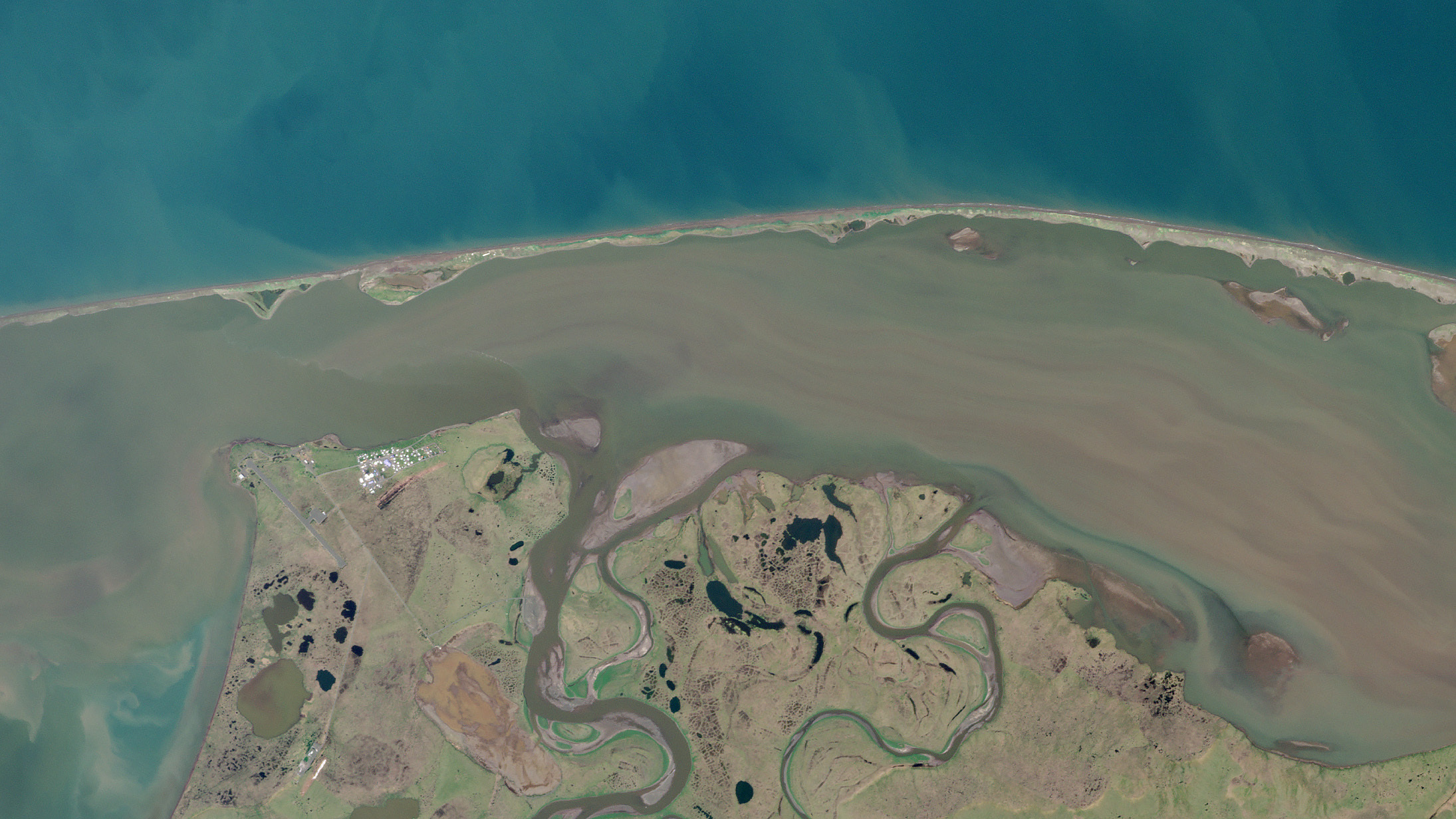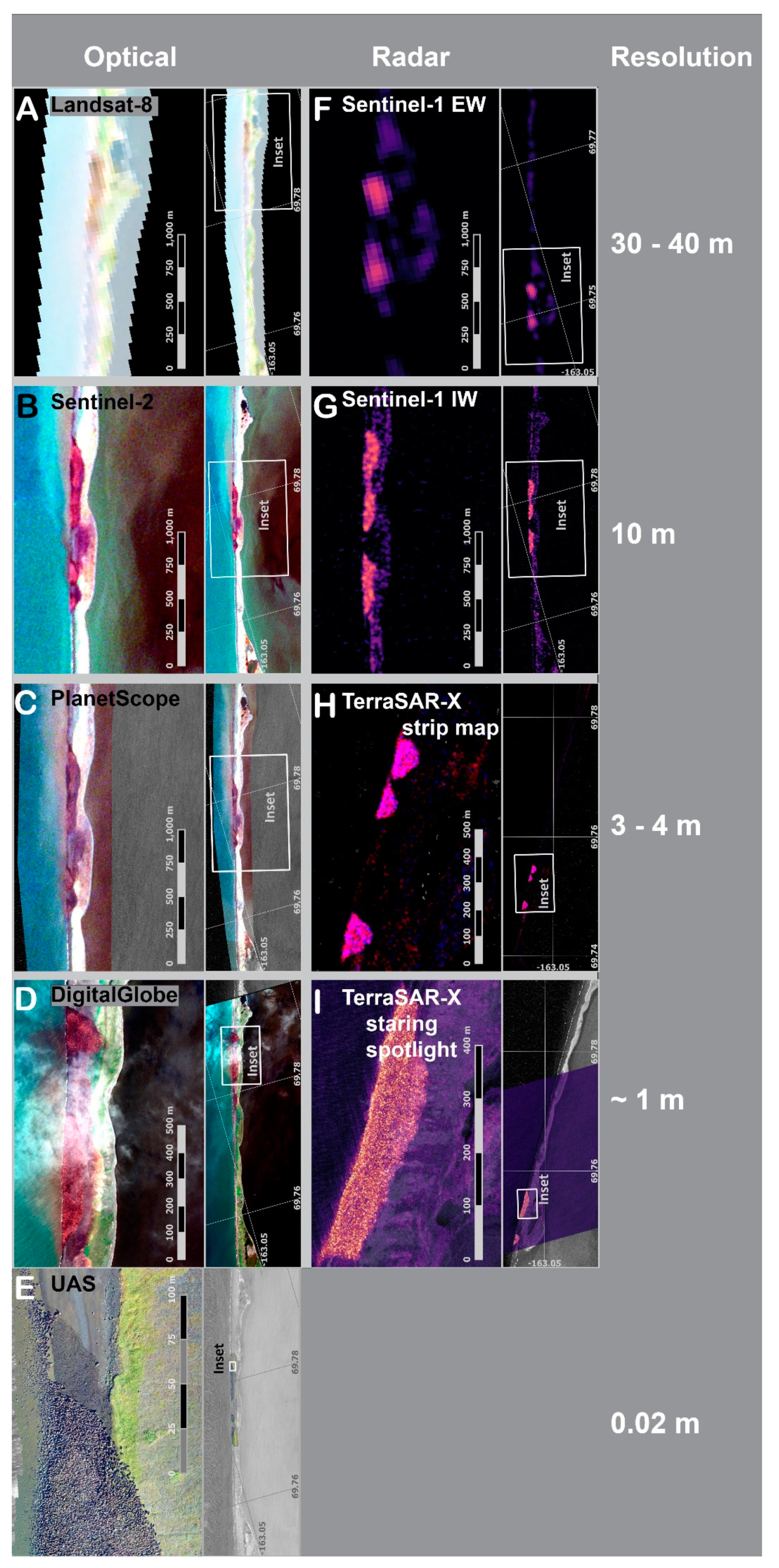Walruses spotted from space adapting to climate change

Groups of walruses gathering on land are so large they're visible from space. Unfortunately, the reason why doesn't bode well for the animals' future.
In recent satellite imagery captured by Planet, which operates the world's largest pack of Earth-observing satellites, large groups of walruses can be seen crowding Earth's coastlines, all the way from space. The image shows ambiguous, "distinctive red-brown" blobs decorating the Alaskan coastline. Previously, walruses would gather in groups of up to many thousands, called "haulouts," on Arctic sea ice far from the shore. But with sea ice melting at rapid speeds due to climate change, they have no choice but to gather on land.
A new study by the United States Geological Survey (USGS) has found that satellite images like those captured by Planet could be a useful tool for monitoring the impact that climate change is having on these walrus populations.
Related: Could climate change make humans go extinct?
Happy #ScienceWednesday! Did you know that walruses gather in groups so large, they can be seen from space?Due to climate change, they're forced to gather on land rather than their normal sea ice. Learn more from this @USGS study using Planet's data: https://t.co/AsWw13dukS pic.twitter.com/dApRcaSqxvNovember 3, 2021
"Due to climate change, they're forced to gather on land rather than their normal sea ice," Planet shared in a Twitter post along with the USGS study. They added in a follow-up tweet that the walruses aren't visible in the image shared in the original tweet, but can be seen in the images and data in the paper (you can find the paper here, and the image is below.)

The consequences of this shift are significant for these walrus populations. Grouped together on sea ice, the Arctic mammals were able to eat, rest and live without interference from outsiders. Now on land, they have to contend with humans.
Humans can easily scare the walruses in these haulouts, which can make them stampede into the ocean. Stampeding in these large groups can kill many walruses every time it happens, Planet described in a statement.
Get the Space.com Newsletter
Breaking space news, the latest updates on rocket launches, skywatching events and more!
To study these populations, USGS researchers studied a remote coastal area in Alaska using data from PlanetScope, a constellation of about 130 Earth-observing satellites operated by Planet, and TerraSAR-X, a satellite operated by a partnership between the German Aerospace Center and Astrium, a subsidiary of the European Aeronautic Defence and Space Company (EADS).
They compared this data with drone images of the same region taken over the same period of time and found that the walrus groups were "readily visible in satellite imagery," Planet said.
Their study shows how observations with satellites like those from Planet could be an integral part of monitoring populations like these as they persist through climate change.
"These findings suggest that satellite reconnaissance may provide a tool for monitoring walrus haulout occupancy and dynamics, as may be required by resource managers," the USGS researchers noted in their paper.
The study which uses Planet's data to study walrus populations was published Oct. 23 in the journal Remote Sensing.
Email Chelsea Gohd at cgohd@space.com or follow her on Twitter @chelsea_gohd. Follow us on Twitter @Spacedotcom and on Facebook.
Join our Space Forums to keep talking space on the latest missions, night sky and more! And if you have a news tip, correction or comment, let us know at: community@space.com.

Chelsea “Foxanne” Gohd joined Space.com in 2018 and is now a Senior Writer, writing about everything from climate change to planetary science and human spaceflight in both articles and on-camera in videos. With a degree in Public Health and biological sciences, Chelsea has written and worked for institutions including the American Museum of Natural History, Scientific American, Discover Magazine Blog, Astronomy Magazine and Live Science. When not writing, editing or filming something space-y, Chelsea "Foxanne" Gohd is writing music and performing as Foxanne, even launching a song to space in 2021 with Inspiration4. You can follow her on Twitter @chelsea_gohd and @foxannemusic.
